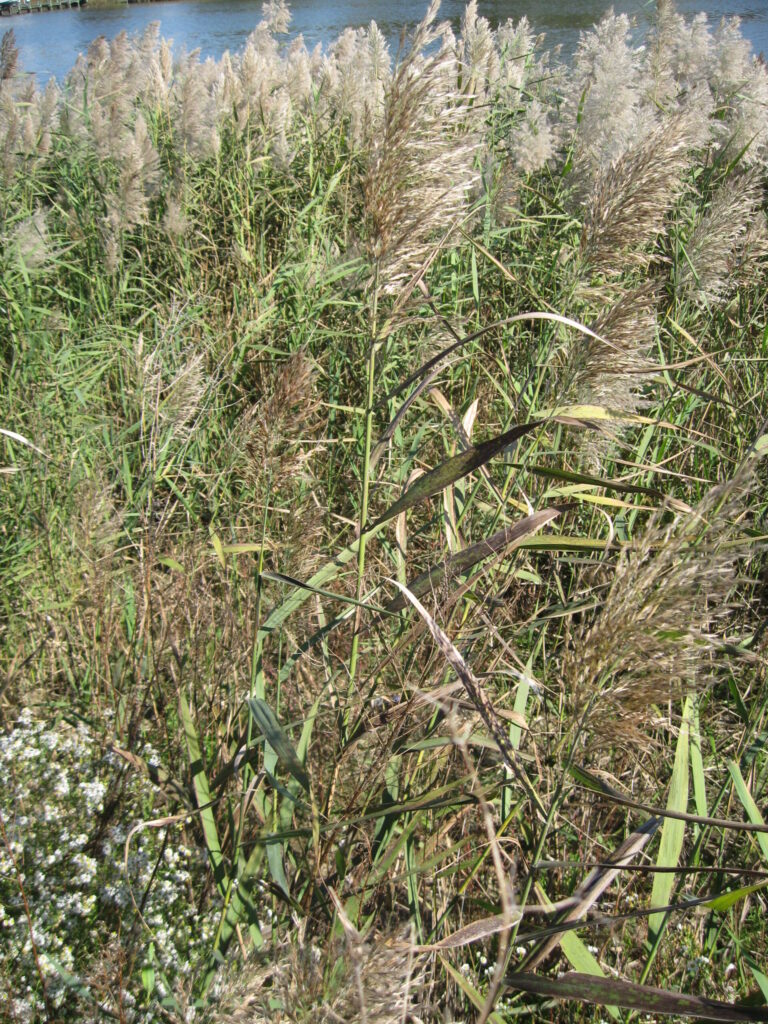Phragmites Control
 Controlling invasive, noxious weeds in wetlands
Controlling invasive, noxious weeds in wetlands
Phragmites (Phragmites australis) continues to invade the Eastern Shore and other parts of Maryland at an alarming rate. Not only does it grow so tall that it blocks the shoreline view, more importantly, it grows so thick it can destroy a wetland’s fragile ecosystem by choking out the beneficial and native wetland plants, becoming a monoculture with practically no wildlife habitat value.
CWH initiated its Phragmites Control Program to slow the rapid spread of this invasive wetland plant and restore diverse wetland ecosystems. A five-year research study by CWH documented that once a pure stand of phragmites was eliminated, 65 beneficial species of plants emerged from the existing wetland seedbed.
In 2019, CWH sprayed 219 properties in Anne Arundel, Caroline, Dorchester, Kent, Queen Anne’s and Talbot counties to eliminate phragmites and improve the biodiversity of hundreds of acres of wetlands. Phragmites will never disappear from Maryland’s shoreline, but by controlling its spread wetlands can be saved from further destruction.
PHRAGMITES FAQS
What is phragmites?
Also known as “common reed,” phragmites is a non-native, extremely invasive plant that thrives in either fresh or brackish wetland areas. Large plumes develop in the fall, sometimes growing 10 to 12 feet tall. Phragmites spreads rapidly through its rhizome system and can easily take over an entire wetland area in a matter of a few years. Because it grows so tall and dense, it will choke out the beneficial wetland plants and therefore provides little value for wildlife.
What do you spray on phragmites to kill it?
A glyphosate herbicide called Rodeo or Aqua Neat, when mixed with a surfactant, is approved for all wetland applications. Spraying is done at a critical time in the early fall when the other wetland plants have gone dormant but the phragmites has not. CWH technicians are state-certified to spray glyphosate herbicides in wetland environments.
Is it OK to cut down your phragmites stand?
Yes, you can cut down your phragmites, but only after it has been sprayed with Rodeo/Aqua Neat in the fall and has turned brown (usually 3-4 weeks after spraying). If you intend to have your phragmites sprayed, do not cut it during the summer. The canes need to have sufficient green leaf surface when treated in order for the spraying to be effective.
CWH’s licensed technicians use a glyphosate (Rodeo or Aqua Neat) solution that, when applied at a critical time period in the fall, kills the phragmites but not the other beneficial native wetland plants.







You must be logged in to post a comment.